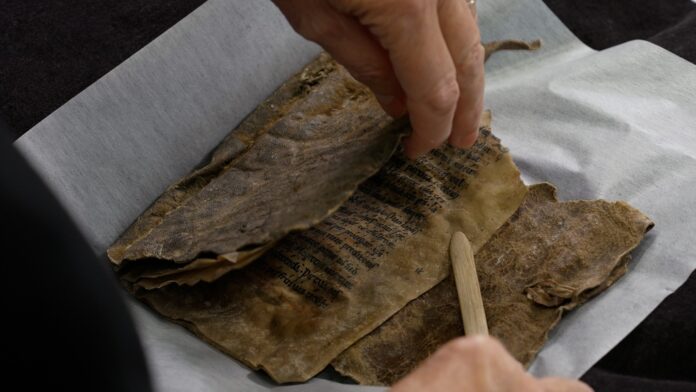A recently discovered 13th-century songbook bound in sealskin might be the oldest surviving book from Norway. The “Hagenes codex,” as it’s now known, was likely crafted around 1200 AD and passed down through generations of a Norwegian farming family. This humble, leather-bound treasure is causing quite a stir among historians and book enthusiasts alike.
The codex itself is small and contains eight Latin liturgical chants—hymns sung during Christian religious services—written in a distinctive musical notation. One of the hymns honors Mary, while another celebrates All Saints’ Day, a solemn feast honoring saints without individual remembrance days. Several pages are missing from the book, but according to family tradition, it likely originated from a church or monastery.
What makes this medieval manuscript truly unique is its unusual cover. The codex consists of two double leaves of parchment bound in sealskin, with wispy fur still clinging to the surface. “This book feels incredibly authentic,” explains Åslaug Ommundsen, a medieval Latin professor at the University of Bergen. “It’s the kind of thing a priest or cantor would carry to use in church.”
Chiara Palandri, a conservator at the National Library of Norway, adds that the handmade nature of the binding, along with the seemingly local leather strap possibly crafted from reindeer skin, points toward a skilled Norwegian craftsman working with readily available materials.
While sealskin binding is uncommon in medieval Norway, it hasn’t been entirely unheard of. Recent studies on 12th and 13th-century book bindings across Europe reveal that Cistercian monks in France occasionally utilized sealskin for covering books. These “hairy books” featured skins from a variety of seal species sourced from an extensive network extending from Scandinavia to Greenland, highlighting the fascinating global trade routes of the time.
The Hagenes codex, however, diverges from these continental examples, suggesting it was crafted within Norway itself.
Further examination using microscopic techniques has confirmed the sealskin binding, and scientists are planning additional analyses. This will help pinpoint the origin of the parchment and leather used, allowing for a more precise dating of the book’s creation. If these tests confirm its Norwegian origins, the codex would stand as a singular testament to early medieval bookmaking practices that vanished from other parts of Europe.
The Hagenes codex presents an exciting glimpse into Norway’s past. Its existence raises intriguing questions about the craftmanship and artistic traditions of the era, shedding light on how faith and everyday life intertwined during the Middle Ages.
































